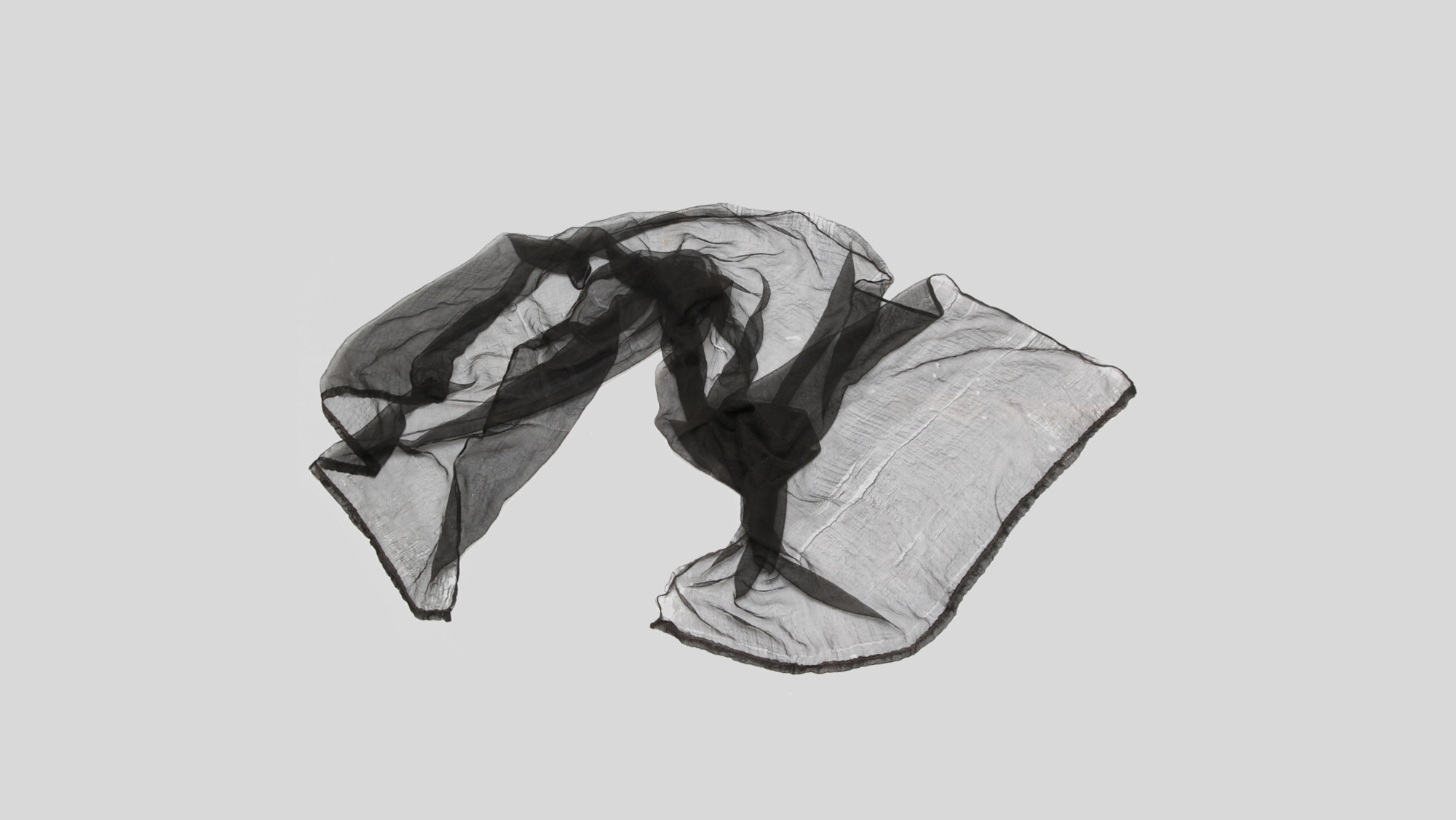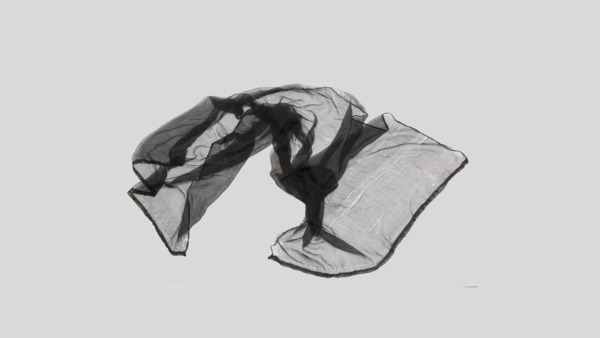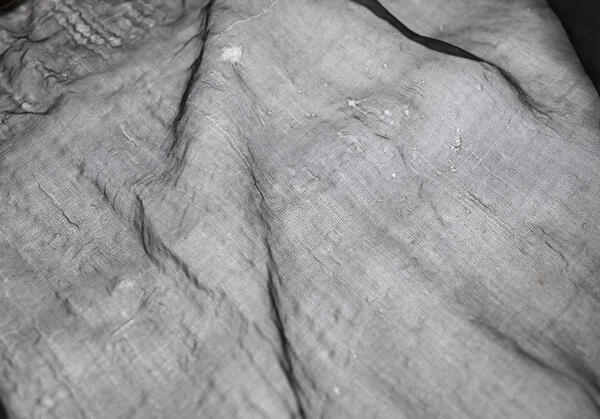The gauze scarf from the collection of the Turinsk Decembrists House Museum is thought to have belonged to Kamilla Ivasheva, the wife of the state criminal Vasily Ivashev, in the first half of the 19th century. For a long time, this gauze scarf and some other personal belongings were carefully protected and preserved as family heirlooms. The memorial scarf of Kamilla Ivasheva was donated to the museum by Yelena Konstantinovna Reshko, the great-granddaughter of the Decembrist Vasily Petrovich Ivashev.
Gauze is a light, open-weave fabric made of silk, linen, or cotton. It is considered very delicate and diaphanous and is used for making beautiful and elegant clothes and accessories. The word “gauze” is derived from the name of the Palestinian city of Gaza, where the fabric is thought to have originated. According to another version, the word comes from the French “gaze”, which is often attributed to the Arabic word “qazz” meaning “raw silk”. The fabric is produced from very thin silk threads or finely twisted cotton ones. The yarn used for gauze starts from Nm (new metric count) 120/1 and higher. In this fabric, the threads do not fit tightly to each other, resulting in small openings between them. In a classic gauze weave, two warp threads are woven around one weft yarn.
The fabric of this kind of weaving is sheer and translucent. The novel “Mikhailovsky Castle” by Olga Forsh has the following lines,
Gauze is a light, open-weave fabric made of silk, linen, or cotton. It is considered very delicate and diaphanous and is used for making beautiful and elegant clothes and accessories. The word “gauze” is derived from the name of the Palestinian city of Gaza, where the fabric is thought to have originated. According to another version, the word comes from the French “gaze”, which is often attributed to the Arabic word “qazz” meaning “raw silk”. The fabric is produced from very thin silk threads or finely twisted cotton ones. The yarn used for gauze starts from Nm (new metric count) 120/1 and higher. In this fabric, the threads do not fit tightly to each other, resulting in small openings between them. In a classic gauze weave, two warp threads are woven around one weft yarn.
The fabric of this kind of weaving is sheer and translucent. The novel “Mikhailovsky Castle” by Olga Forsh has the following lines,




